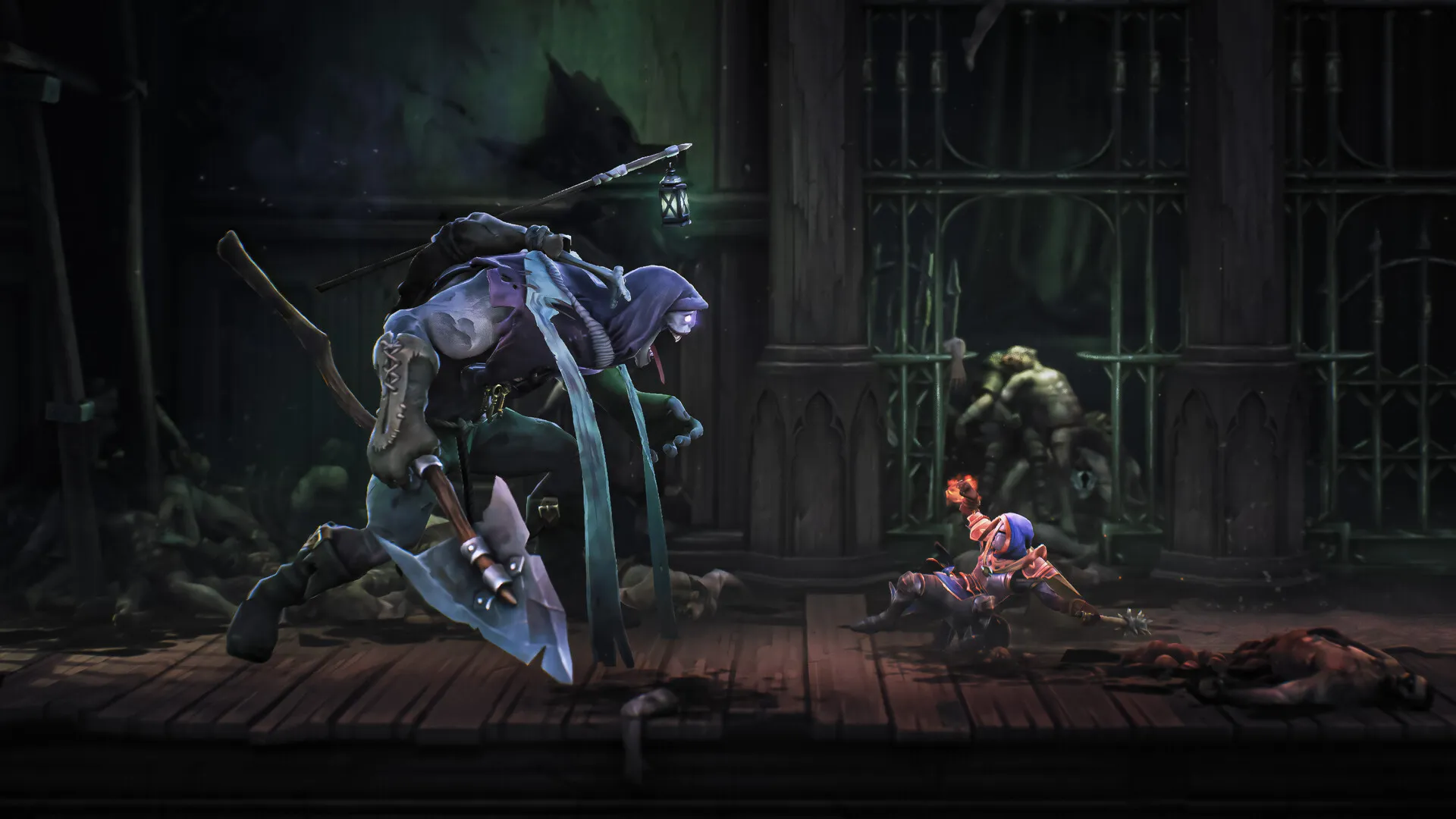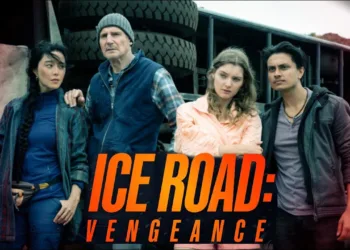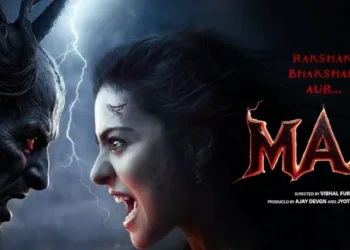From the opening shot of a moonlit swamp, Mandragora casts you as an Inquisitor who has defied the King‑Priest’s iron will. That fall from grace carries weight every time the game’s orchestral score swells over the Witch of Gravesend Swamp, setting a grim tone before you even draw steel. Early cinematics lean into oppressive religious iconography—cracked stained‑glass windows, blood‑flecked altars—so the quest to hunt a supposed witch feels driven by more than mere duty.
As you push beyond the marshes into moss‑draped forests, crumbling castle corridors, and gravity‑warped rifts, subtle shifts in lighting and parallax backgrounds stitch together a haunted dream. Flickering torches reveal occult glyphs on stone walls, while distant silhouettes of malformed beasts hint at unseen dangers. Each environment whispers backstory without a single line of text.
Within this broken world, factions clash under the surface. The Inquisition’s dogma breeds mistrust among its ranks—even as you recruit a blacksmith, tailor, cook, alchemist, goldworker and enchanter around the Witch Tree, you sense their own secrets. Witches and monsters emerge less as villains and more as victims of Entropy’s spread, inviting moral questions during optional side quests.
Markers guide you toward main objectives but never hold your hand. You might pause to rescue a caravan guard or uncover Gerald’s bestiary entries before confronting the next major threat. Faith, nature, corruption—they all converge here, leaving one lingering question: can belief itself be rewritten?
Striking the Balance: Combat Flow and Custom Challenge
Mandragora’s combat feels sculpted for both precision and adaptability. Light and heavy strikes link into satisfying combo chains, and occasional lock‑in animations emphasize commitment—every swing demands timing, much like Salt & Sanctuary’s deliberate weight.
Dodging uses brief invulnerability frames, rewarding split‑second decisions in the same spirit as Dead Cells’ i‑frame rolls. When you weave in a Chaos spell or summon an astral barrier, the rhythm shifts, reminding you that magic playstyles must respect the same tactical pacing as swordplay.
Resource tension anchors each encounter. Melee fighters watch a single stamina bar, and mages must ration Mana or adrenaline. Early runs make every potion precious—crafting station access feels like a minor triumph—while late‑game abundance transforms scarcity into comfort. Health flasks behave like a safety net, but food buffs often outshine them, encouraging players to explore side content for cooking ingredients.
Boss arenas showcase Mandragora’s design flair. A swamp witch might cloak herself in mist, telegraphing a slam with glowing roots, whereas the draconic guardian’s fiery sweep demands perfect dodge timing. Multi‑phase encounters rearrange hazards mid‑battle, and corpse runs—where your dropped Essence waits at your point of death—keep stakes high. Enemy respawns are tied to rest points, giving you space to clear areas and return with new strategies.
Difficulty sliders offer genuine choice. Three tabs let you dial enemy damage, health, and your own stamina costs down in ten‑percent increments. Turning damage to 70 percent makes late‑game gauntlets feel like a rehearsal, while default settings deliver the intended test of reflexes. This system shifts challenge without undermining pacing—players can tune tension rather than tear their hair out.
Progress is constantly signaled. Invisible saves occur after each victory, and shortcuts unlock doors that link distant checkpoints. Fast travel nodes appear on the map the moment you rest, and a blue halo around your hero hints at pending level‑up. Visit a rest point, and that menu pops open, smoothing the loop between fight and upgrade—proof that interactive design can reinforce narrative growth.
Web of Paths and Perilous Platforms
Mandragora unfolds like a classic Metroidvania, rewarding curiosity with every new movement tool. At first, you hop and roll through mossy corridors, but soon you unlock double‑jump, grapple hook, glide and even a ground‑shattering stomp. Each ability reframes earlier sections—what was once a dead‑end pit becomes a shortcut to hidden chests. It’s reminiscent of Hollow Knight’s elegance, yet here the Witch Tree’s rift magic adds a darker edge.
The map starts as broad strokes sketched on your screen, then gains detail through fragments you reclaim at the hub. Unlike many genre peers, Mandragora lets you drop custom markers, so you can mark a suspicious wall or an unclaimed root patch. Objective pins point the way to key areas without holding your hand, striking a smart balance between free‑form exploration and purposeful design.
Traps punctuate the thrills: spike pits swing into view, pendulum blades snap shut, and platforms vanish if you’re off by a pixel. Checkpoints feel fairly placed—often just beyond a gauntlet of hazards—though instant‑death zones can sting when your grapple hook misfires. Collision detection is generally tight, but on rare occasions a well‑timed double‑jump can feel finicky, reminding you that precision is the price of discovery.
Secrets hide everywhere. A collapsed walkway might conceal an optional boss lairing beneath a rift. Collecting Mandragora roots and filling Gerald’s bestiary doesn’t just pad stats; it layers worldbuilding into your quest log.
Combat arenas sit alongside quiet alcoves, letting tension ebb and flow. Shortcut doors ease travel fatigue without draining the thrill of retracing your steps. In a landscape where every corner hums with possibility, you can’t help wondering: which unexplored path will carry the next revelation?
Roots of Power: Classes and Customization
Mandragora gives you six ways to shape your Inquisitor’s destiny—and each choice ripples through the world you explore. The Vanguard’s sword‑and‑board stance, with shield parries that crack through enemy animations, evokes the steadiness of a knight in classic Dark Souls, while the Flameweaver blends scalding fireballs with sword strikes, casting flickering light in tumbling dungeons.
Spellbinder leans into arcane DPS and crowd‑control blasts, trading melee safety for zoning power. Wyldwarden’s nature magic envelopes foes in creeping vines or healing mists, giving you a support‑driven playstyle rarely seen in 2D action RPGs. Nightshade dances between daggers and poison clouds—its high‑risk, hit‑and‑run flow feels as cinematic as a film montage of a stealthy assassin. Finally, the Vindicator/Inquisitor hybrid unlocks both blades and sorcery, perfect for players who crave the freedom to pivot mid‑battle.
Underneath each class sits a sprawling skill tree, fragmented across multiple vendor locations. You’ll find pros and cons in its modular design: discovering a rare active node that grants on‑kill healing feels like a narrative reward, yet hopping between menus at the blacksmith, tailor, and alchemist can disrupt pacing.
Passive boosts—health, stamina, spell potency—stack in predictable ways, while active talents introduce signature moves that define your emotional attachment to a class. At level 25, multiclassing tempts you to dilute a core build or embrace a chaotic blend; either choice can feel empowering or unfocused, depending on how you value clean progression versus experimental mash‑ups.
Your gear reflects these decisions. Swords, greatswords, daggers and staves carry distinct weight classes, where equip‑load affects dodge speed and animation weight. NPC services at the Witch Tree—blacksmith forging, tailor crafting, cook’s buffs, alchemist concoctions, goldworker rings and enchanter upgrades—transform raw Mandragora roots, gems, and linen cloth into tangible power spikes.
Level‑up moments are clearly signaled by a glowing aura, and resting automatically opens menus for point allocation. Losing Essence on death then reclaiming it in a tense corpse run tightens the risk‑reward loop, reminding you that every stat point earned is hard‑won.
Which class will leave the deepest mark on your journey through Faelduum?
Sanctuary Among Shadows
Stepping into the Witch Tree feels like finding a heartbeat in Faelduum’s darkness. At its center stands the gnarled shrine, flanked by merchant tents and crafting stations that hum with purpose. A single button press whisks you back here from any unlocked rest point, turning a sprawling world into something familiarly yours.
Each NPC you recruit—be it the blacksmith hammering new blades or the cook simmering stew—brings both gameplay utility and narrative texture. The tailor’s gleaming shears hint at her own past losses, while the alchemist’s bubbling vials reflect discoveries made in haunted swamps. Their side quests send you beyond main paths, weaving personal stories into your broader crusade.
As you feed linen cloth and Mandragora roots into these services, new recipes and spells unfold. The goldworker’s rings gain extra sockets, and the enchanter’s relics spike your stats—small power spikes that reshape late‑game builds and invite a second run. That sense of growth mirrors the camp itself, sprouting tents and lanterns with each new arrival.
Nearby, Gerald’s bestiary plaques chronicle defeated horrors, encouraging hunts for every spike‑toothed creature. The bounty board offers cash for extra challenges—mini‑quests that deepen both loot and lore.
Watching the camp swell from a lonely clearing into a bustling refuge underscores Mandragora’s emotional core: even in a world beset by Entropy, hope can root itself in unlikely places…
Visceral Aesthetics and Sonic Atmosphere
Mandragora paints its world in rich, painterly strokes—2.5D platforms float before 3D‑modeled backdrops that shift with dynamic weather cues and torch glows. Character portraits evoke hand‑drawn fantasy epics, and attack animations carry weight, from the Vanguard’s shield bash to the Nightshade’s swift daggers. Ambient motion—swaying reeds in the swamp, mist drifting through castle halls—reinforces the sense that every corner hides a story.
The audio design weaves seamlessly into that tapestry. Swamp areas hum with low, droning chords, while boss themes swell with choir and percussion to signal narrative stakes. Rifts crackle with otherworldly harmonics as you step between realms. Voice acting ranges from gravel‑voiced priests to breathy witches, and portrait lip‑sync holds up even during rapid dialogue exchanges.
Performance is equally polished: PS5 and Series X/S run at a steady 60 FPS, PC scales smoothly up to 4K, and loading screens vanish in seconds. Occasional platforming hiccups—like a misjudged grapple collision—are rare against a backdrop of tight controls and customizable input mappings. In a crowded indie scene, its seamless blend of look, sound, and reliability sets a high bar for underdog studios…
The Review
Mandragora Whispers of the Witch Tree
Mandragora: Whispers of the Witch Tree offers a compelling blend of Metroidvania exploration and Souls‑inspired combat, supported by rich art, evocative sound, and deep customization. While occasional platforming hiccups and pacing dips temper the experience, its narrative stakes and replayability shine.
PROS
- Fluid combat with satisfying stamina‑based mechanics
- Rich, hand‑painted 2.5D visuals and dynamic lighting
- Six distinct classes encourage varied playstyles
- Meaningful hub progression at the Witch Tree
- Customizable difficulty sliders broaden accessibility
CONS
- Occasional platforming collision quirks
- Skill trees feel fragmented across menus
- Pacing can stall during backtracking loops




















































